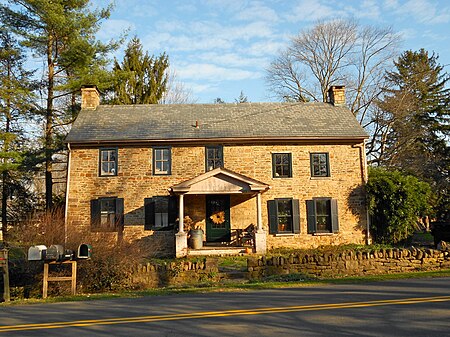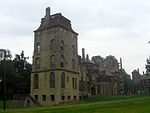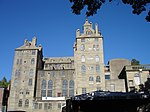Dyerstown Historic District

Dyerstown Historic District is a national historic district located in Dyerstown, Plumstead Township, Bucks County, Pennsylvania. The district includes 17 contributing buildings and 3 contributing structures in the crossroads village of Dyerstown. It is a largely residential district, with dwellings dating to the turn of the 19th century. The most recent dwelling was built about 1870. Some of the houses are reflective of vernacular Georgian style. The district also includes a former grist mill (1758, 1822) and associated outbuildings. The contributing structures are a stone arch bridge, and head race, dam, and remains of the mill race.It was added to the National Register of Historic Places in 1986.
Excerpt from the Wikipedia article Dyerstown Historic District (License: CC BY-SA 3.0, Authors, Images).Dyerstown Historic District
Old Easton Road,
Geographical coordinates (GPS) Address Nearby Places Show on map
Geographical coordinates (GPS)
| Latitude | Longitude |
|---|---|
| N 40.341111111111 ° | E -75.126111111111 ° |
Address
Water Wheel Tavern
Old Easton Road 4424
18902
Pennsylvania, United States
Open on Google Maps








